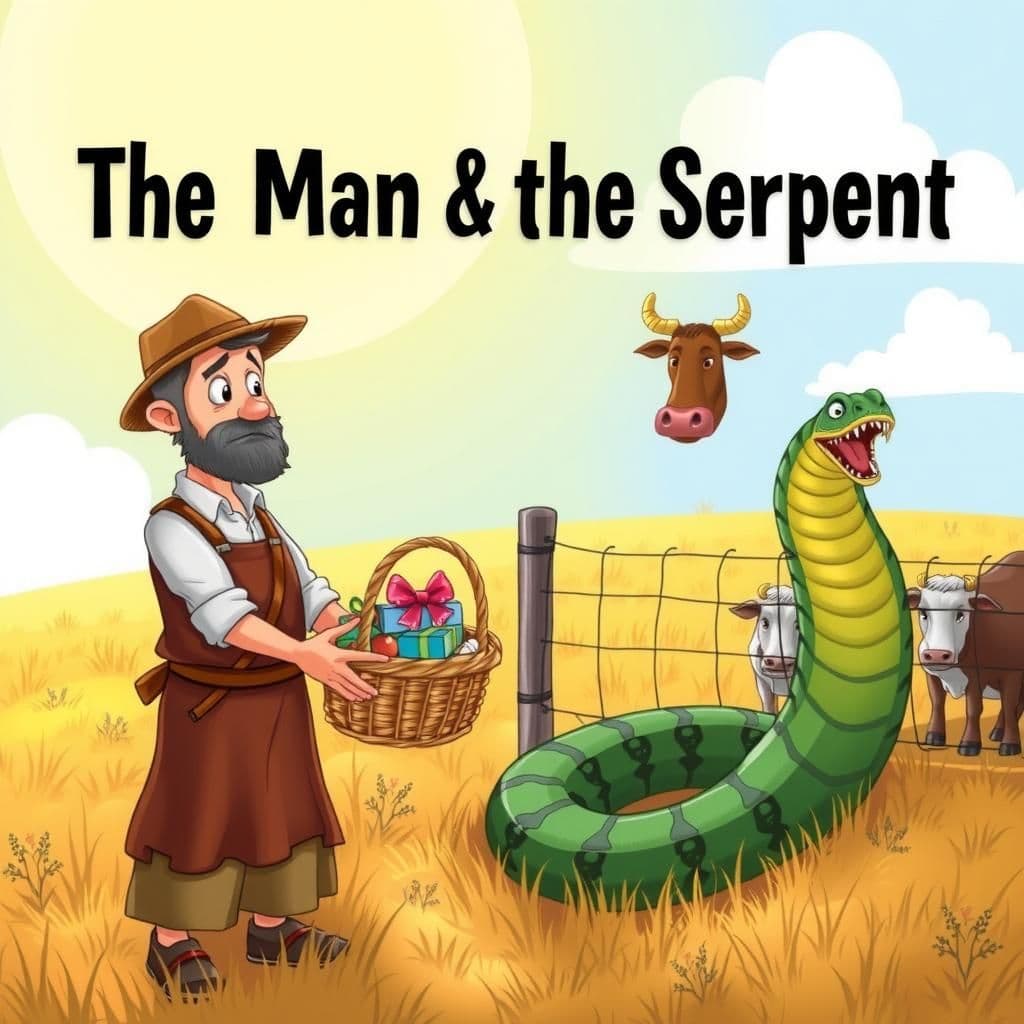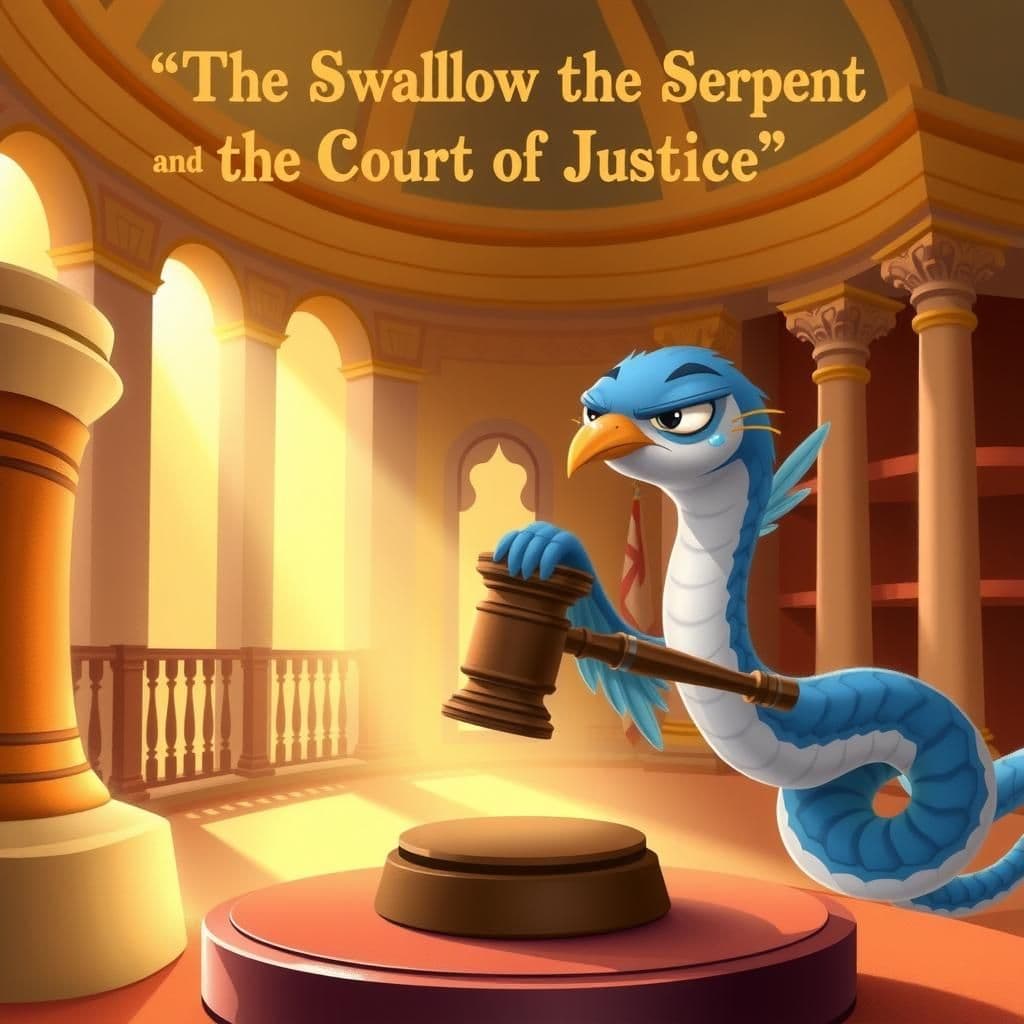The Man and the Serpent

Story Summary
In the short story "The Man and the Serpent," a farmer's son is bitten and killed by a serpent after accidentally stepping on its tail. In retaliation, the farmer injures the serpent, leading to a cycle of revenge that results in the loss of the farmer's cattle. When the farmer tries to reconcile, the serpent teaches a life-lesson moral: while injuries may be forgiven, they can never be forgotten, highlighting the enduring consequences of revenge in this very short moral story.
Click to reveal the moral of the story
Injuries may be forgiven, but the memories of them often linger and prevent true reconciliation.
Historical Context
This story reflects themes of revenge and forgiveness prevalent in various fables across cultures, particularly similar to Aesop's fables and the moral lessons they impart. Its origins can be traced to ancient storytelling traditions that highlight the complexities of human-animal relationships and the consequences of vengeance, emphasizing that while reconciliation is desirable, deep-seated grievances often linger. The tale serves as a moral reminder that, while forgiveness is possible, the scars of past injuries may never fully heal.
Our Editors Opinion
This fable underscores the complexities of forgiveness in modern life, illustrating that while we may seek reconciliation after conflict, the scars of past injuries can linger and prevent true harmony. For instance, in a workplace setting, two colleagues who have had a bitter falling out may attempt to move forward by collaborating on projects, but underlying resentment from previous disagreements can hinder their ability to work effectively together, reminding us that some wounds, though acknowledged, remain too deep to fully heal.
You May Also Like

The Swallow the Serpent and the Court of Justice
In "The Swallow the Serpent and the Court of Justice," a Swallow builds her nest in a Court of Justice, only to have her seven young birds eaten by a Serpent. This poignant tale serves as one of the famous fables with moral lessons, highlighting the injustice of suffering wrong in a place meant to protect all rights. A quick read story with moral undertones, it reminds us that even in the most trusted environments, vulnerabilities can exist, making it an entertaining and thought-provoking animal story.

The Bull the Lioness and the Wild Boar Hunter
In this impactful moral story, a bull accidentally kills a lioness's cub, prompting her to mourn deeply. A wild boar hunter, observing her sorrow, points out that many men also grieve for their lost children due to her predatory nature. This short moral tale serves as a reminder of the cycle of loss and the consequences of one's actions, making it a poignant lesson for class 7 students.

The Horse and the Stag
In this heartwarming moral story, the Horse, once the sole ruler of the plain, seeks revenge on a Stag that intrudes into his pasture. Enlisting the help of a man who promises to aid him, the Horse ultimately finds himself enslaved to the very human he sought to empower, illustrating a powerful lesson about the consequences of vengeance and the importance of freedom. This tale serves as a poignant reminder of the lessons from moral stories that resonate in childhood stories with moral lessons.
Related Collections
Other names for this story
Revenge of the Serpent, Forgiveness and Fury, The Farmer's Regret, A Serpent's Vengeance, Healing the Rift, The Cost of Revenge, Unforgiven Wrongs, The Tale of Tail and Tragedy
Did You Know?
This fable illustrates the theme that while forgiveness may be possible, the scars of past grievances often linger, making true reconciliation difficult, as both parties carry the weight of their losses and betrayals.
Subscribe to Daily Stories
Get a new moral story in your inbox every day.